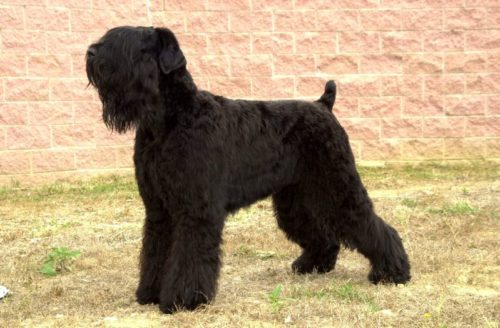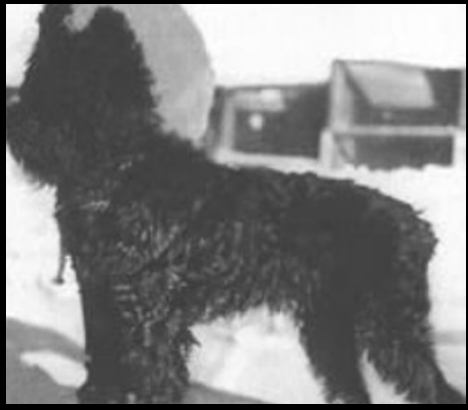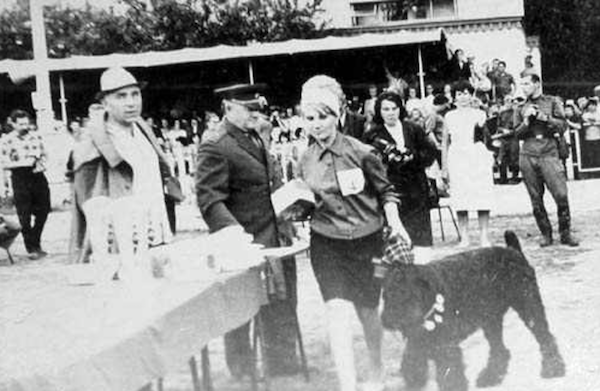
It’s pure coincidence when we write about a particular breed twice in a day, but it tends to happen when we come across something interesting while researching one aspect of the breed only to find another aspect we think worth sharing. We were no sooner done writing about the Black Russian Terrier’s “Paws of Doom” when we came across “Roy.”
For those unfamiliar with the history of the Black Russian Terrier, a quick synopsis: In 1924, the Russian Military Council mandated that every department in their military would include dogs and dog trainers as part of their military forces. This was all well and good except that Russia had few dogs with which to work. Many Russian breeds had been slaughtered during the Russian revolt, and many more died during World War I. WWII was equally devastating as many dogs died at the hands of the Nazis. Having seen their value as military dogs, the Red Army developed a dog breed specific to the needs of their military, and specifically, the Central Military School of Working Dogs, now better known as the Red Star Kennel, was assigned the task of creating a better military dog.
It’s said that some twenty breeds went into developing the Black Russian Terrier, among them were the Giant Schnauzer, the Rottweiler, Airedale Terrier and Newfoundland.

Photo of dog believed to be “Roy”
One Giant Schnauzer named “Roy,” however, consistently produced offspring that were large and black with fringes on their head and extremities. First crossed him with Airedale terrier bitches. The first litter was received in 1951. On the second stage the Giant Schnauzer was crossed with the Rottweiler. On the third stage the Giant Schnauzer was crossed with the Moscow water dog (Newfoundland X German shepherd X Eastern European shepherd). Then those hybrids were crossed among themselves. Additional breeds were added later on, but their contribution was not significant. In the end, no matter which female or breed Roy was bred with, puppies were “stamped” with Roy. Colonel G. Medvedev of the Central Military School of Working Dogs paid particular attention to that aspect of Roy, and decided to move in that direction. It’s believed that that was when the core of the breed program took off. Many feel that Roy was the foundation of the breed, and today, some would describe “Roy” as a prepotent stud dog.

Photo of Red Star Kennels’ Col. Medvedev awarding a prize to a handler and BRT at a show in Leningrad – photo found on Pinterest and happily credited upon receipt of information.
Color image: By Guidopatek – Own work, CC BY-SA 3.0, https://commons.wikimedia.org/w/index.php?curid=17532353
